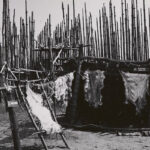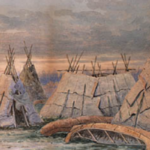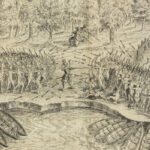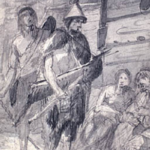The Indigenous Nations and First Nations bands of Ontario represent a rich mosaic of cultural, linguistic, and historical diversity. With over 130 First Nations bands across the province, including members of the Anishinaabe (Ojibwe, Odawa, and Potawatomi), Haudenosaunee (Iroquois Confederacy), Cree, and Métis, these communities offer a profound connection to the land and waterways of central Canada. This article explores their pre-European lifestyles, governance, warfare, spirituality, social structures, and food systems, emphasizing their adaptability and resilience.
Pre-European Contact Lifestyle
Before European contact, the Indigenous peoples of Ontario thrived in a land rich with forests, rivers, and lakes. The Anishinaabe, primarily found around the Great Lakes, relied heavily on fishing, hunting, and gathering. Wild rice, known as manoomin, was a dietary staple and cultivated along shallow lakes and rivers. This grain held not only nutritional importance but also spiritual significance, often featured in ceremonies (Rogers & Smith, 1994).
The Haudenosaunee, whose territory extended into southern Ontario, practiced a sophisticated agricultural system known as the “Three Sisters”: corn, beans, and squash. These crops were interplanted, supporting each other’s growth and providing balanced nutrition. The Cree and other northern groups adapted to the boreal forests, relying on moose, caribou, and fish as their primary food sources. Seasonal movements ensured sustainable resource use and fostered a deep understanding of ecological cycles.
Social Structures and Slavery
Indigenous social organization in Ontario varied by region and nation. Among the Haudenosaunee, society was matrilineal, with clan systems that governed kinship and resource-sharing. Women played significant roles in decision-making, particularly in appointing chiefs. In contrast, the Anishinaabe had more fluid leadership structures, often led by individuals who demonstrated wisdom and skill.
Slavery existed among some nations, such as the Haudenosaunee, as a result of intertribal warfare. Captives were sometimes enslaved but were often assimilated into their captors’ communities, reflecting a cultural adaptability rather than rigid hierarchies. Historian Bruce Trigger notes, “Slavery among Indigenous groups in the northeast was less about subjugation and more about replenishment of community through assimilation” (Trigger, 1990).
Politics and Warfare
Political systems were decentralized yet highly effective. The Haudenosaunee Confederacy, known as the Great Law of Peace, is one of the earliest examples of a sophisticated political system in North America. This confederation united five (later six) nations under a system of shared governance, emphasizing consensus and cooperation. The Anishinaabe employed councils where elders, spiritual leaders, and chiefs collaborated on decisions affecting the community.
Warfare was an integral aspect of life for many Indigenous nations, often rooted in territorial disputes or revenge. The Haudenosaunee were renowned for their strategic military alliances and raids, particularly against the Wendat (Huron). These conflicts, while destructive, also reinforced alliances and tested leadership. Trigger observed, “Warfare was not merely a survival strategy but a mechanism for maintaining balance and asserting identity” (Trigger, 1990).
Spirituality and Origin Stories
Spiritual beliefs were deeply intertwined with daily life. The Anishinaabe and Cree held ceremonies to honour spirits inhabiting the natural world, seeking balance and guidance. The Midewiwin, or Medicine Society, was a key spiritual institution for the Anishinaabe, emphasizing healing and knowledge.
Origin stories provided a framework for understanding existence. For the Haudenosaunee, the Sky Woman narrative explained the creation of the Earth, offering lessons in harmony and respect. These oral traditions were vital in preserving culture and teaching values across generations.
Food Systems and Trade
Ontario’s Indigenous peoples displayed remarkable ingenuity in securing and preserving food. The Haudenosaunee’s agricultural expertise allowed for the storage of surplus crops, enabling larger, more permanent settlements. The Anishinaabe and Cree relied on smoking and drying techniques to preserve fish and meat, ensuring food supplies through harsh winters.
Trade networks were extensive, linking Ontario’s Indigenous communities to those as far as the Atlantic coast and the Great Plains. Items like copper, shells, and furs moved along these routes, demonstrating the economic sophistication of pre-contact societies. Rogers and Smith noted, “Trade was more than commerce; it was a cultural exchange that strengthened alliances and fostered mutual respect” (Rogers & Smith, 1994).
Contact with Europeans
The arrival of Europeans in the early 17th century introduced profound changes. The fur trade reshaped traditional economies, as beaver pelts became highly sought after by French and British traders. Indigenous trappers and traders adapted quickly, integrating European goods like metal tools and firearms into their lives. However, the introduction of diseases such as smallpox decimated populations, leading to significant social upheaval.
Missionaries brought Christianity, which often clashed with traditional beliefs. While some Indigenous peoples adopted Christian practices, many blended them with their spiritual traditions, creating syncretic forms of worship.
Legacy and Resilience
Today, Ontario’s Indigenous nations continue to thrive, revitalizing their languages, cultures, and governance systems. Efforts to reclaim land, protect natural resources, and teach traditional knowledge highlight their enduring connection to their heritage. Organizations like the Chiefs of Ontario advocate for treaty rights and self-determination, ensuring that Indigenous voices shape the province’s future.
Conclusion
The Indigenous Nations and First Nations bands of Ontario exemplify the strength and complexity of Canada’s Indigenous history. Their pre-European societies, rich in culture and adaptability, laid the foundation for their resilience in the face of immense challenges. As historian J.R. Miller stated, “Ontario’s Indigenous peoples are not merely part of the past; they are a vital and dynamic presence, shaping the province’s identity with their wisdom and strength” (Miller, 2001).
References
- Rogers, E.S., & Smith, D.B. (1994). Aboriginal Ontario: Historical Perspectives on the First Nations. Dundurn Press.
- Trigger, B.G. (1990). The Huron: Farmers of the North. Holt, Rinehart, and Winston.
- Miller, J.R. (2001). Skyscrapers Hide the Heavens: A History of Native-Newcomer Relations in Canada. University of Toronto Press.



